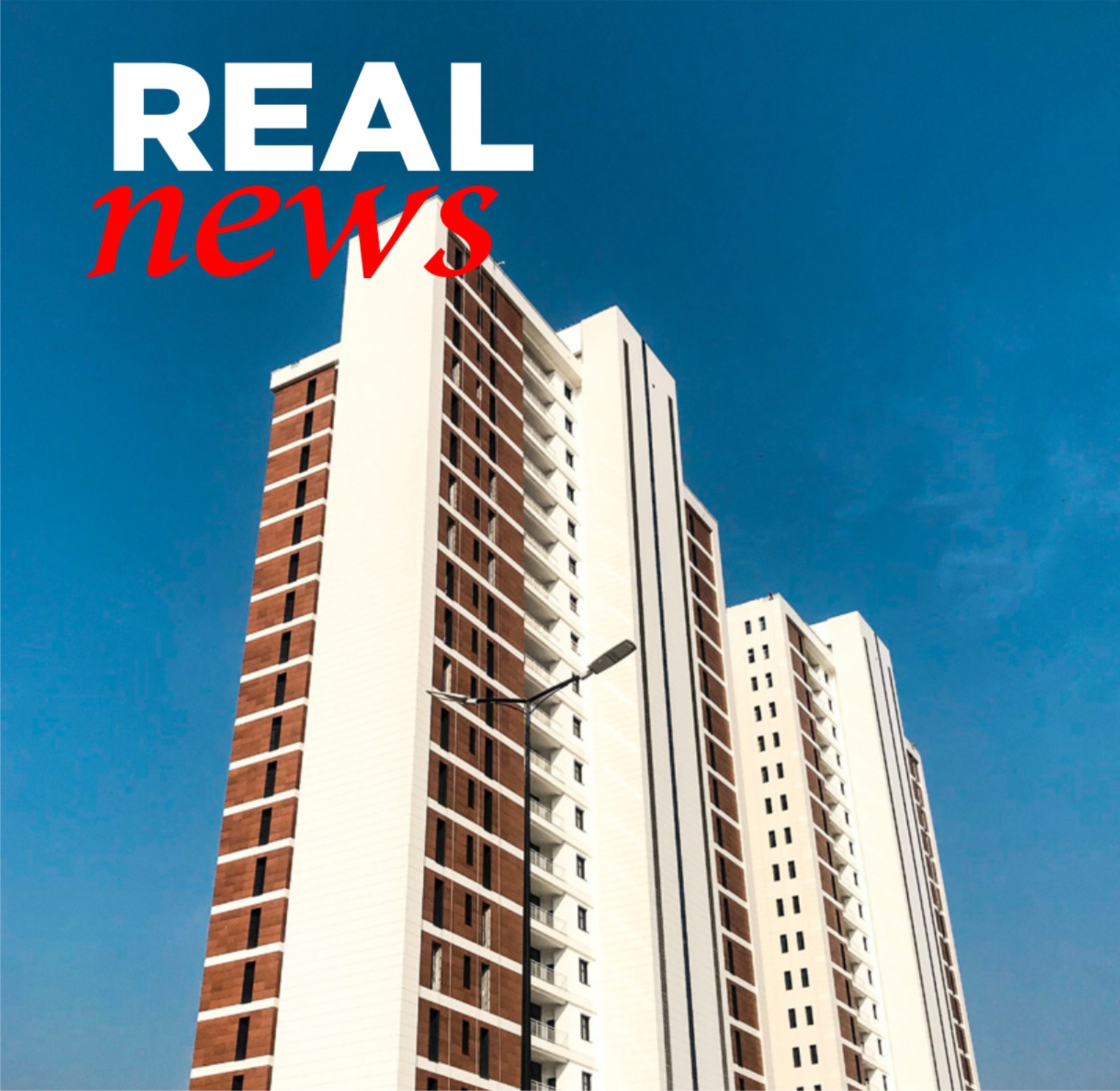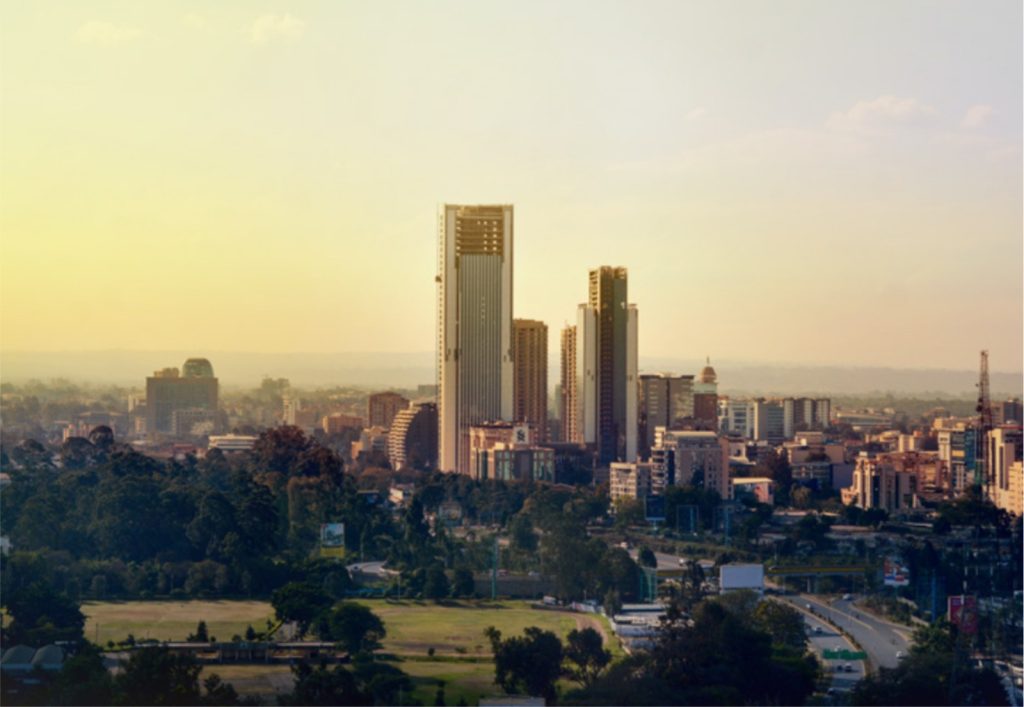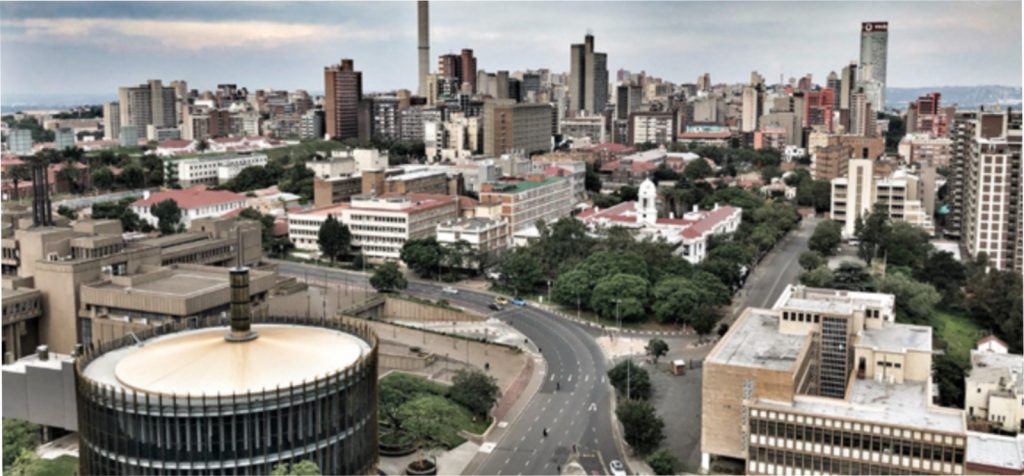
Nigeria’s Housing Market Skyrockets by 40% in Just Six Months
In a remarkable and unprecedented turn of events, Nigeria’s housing market has ignited an astonishing 40% surge in leasing and sales costs during the first half of 2023. This striking revelation was due to an in-depth investigation conducted by none other than The Guardian.
In the face of relentless inflationary pressures, the upward trajectory of interest rates, and the subsequent ebb in fresh investments, the expense associated with leasing or acquiring residential properties in prominent urban centers such as Lagos, Abuja, Enugu, Port Harcourt, and Kano has soared beyond reach, leaving countless aspirants grappling with unattainable dreams of homeownership.
While this evolution of the market holds an element of dynamism and demand resilience, stakeholders have vehemently decried the blatant absence of industry standards and pricing controls. This egregious gap has paved the way for opportunistic operators to ruthlessly exploit the system’s vulnerabilities, unleashing a reign of indiscriminate hikes in material prices.
The Monetary Policy Rate, serving as the definitive pulse of interest rates, has aggressively ascended from 16.5% at the onset of 2023 to a staggering 18.75%. This seismic shift translates to a heart-stopping 12% escalation in capital costs over a mere half-year span. The consequence? A chilling dampening effect on borrowing enthusiasm and a pronounced constriction in the circulation of currency within Nigeria’s economic bloodstream.
For the bustling real estate and construction sectors, the unforgiving surge in construction expenses has dealt a telling blow, precipitating unnerving delays in real estate supply chains. This delicate trend threatens to further inflame the already acute stress wielded on property valuations.
Over recent months, the building materials market has witnessed a relentless crescendo in the prices of vital components. Cement, blocks, rings, paints, reinforcement, sanitary fittings, sand, roofing sheets, tiles, and granite—all pivotal ingredients in the construction alchemy—have conspired to amplify prices by a staggering 70% or more.
In this tumultuous landscape, rentals have astoundingly managed to hold steadfast in the heart of urban cores, flourishing with unwavering vitality in accessible neighborhoods that cater to budget-conscious seekers. Parallelly, property sales have exhibited a degree of resilience, sustained primarily by the financial infusion from Diaspora stakeholders and a strategic emphasis on off-plan property offerings.
Within these urban oases, the epicenter of activity now pulsates within the newly erected gated communities and burgeoning towns that pepper the landscape. Here, developers channel their efforts predominantly into the creation of apartments with one, two, or three bedrooms, as well as alluring terraces—a strategic focus reflecting the unabated vigor in demand and supply.
This panoramic view isn’t confined to any single locale; property pundits attest to observing similar dynamics across the nation, even if the percentage fluctuations aren’t uniform across different property categories.
In the reverberating words of Mr. Frank Okosun, the erudite Chief Executive Officer of Knight Frank Nigeria, “We are grappling with an unprecedented surge, a dramatic 40% leap in house prices—a manifestation of inflation’s merciless grip, influencing both sales and leasing. Even freshly minted properties bear the indelible mark of this inflationary storm.”
The supply side of the equation tells a tale of uncertain waters, where market volatility, juxtaposed with escalating commodity costs, has coerced stakeholders into an uneasy wait-and-watch strategy. This trend, while particularly pronounced in capital-intensive projects, has allowed a more selective inflow of capital, gravitating toward projects where efficiency reigns supreme.
As the relentless march of inflation strips away purchasing power, landlords find themselves justified in exacting a premium on rental rates, strategically capitalizing on surging demand fueled by a rational choice of many to rent, rather than bear the burden of property acquisition.
Echoing these sentiments, Mr. Gbenga Ismail, the esteemed Chairman of the Nigerian Institution of Estate Surveyors and Valuers (NIESV), Lagos branch, affirms that inflation’s indelible mark has indubitably driven prices skyward, a shift attributed to the undeniable influence of replacement costs. Lagos witnesses an astonishing 30 to 50% increase, while Abeokuta and Ibadan experience a 30% uptick.
According to Mr. Ismail, the flow of the property market isn’t just influenced by financial policies, but it’s fiscal policy that wields a more potent hand. He notes, “Monetary policy’s ripples are somewhat subdued in the property domain, which thrives largely on cash transactions. Fiscal policy is the true catalyst for change, especially since mortgage loans wield relatively lesser impact on the market’s pulse.”
Meanwhile, Mr. Chudi Ubosi, Chairman of the Association of Capital Market Valuers (ACMV), paints a picture of cautious restraint during this half-year journey, as investors adopt a cautious “wait and see” stance regarding major real estate investments. Still, the demand for residential havens remains impervious, with homes priced under the N25/35 million bracket, especially flats, terraces, and townhomes, maintaining a formidable stronghold.
The real estate landscape is ablaze with fervor, as unprecedented forces mold its contours. A 40% surge in six short months—unleashing a cascade of consequences, redefining aspirations, and ushering in a new era of challenges and opportunities alike.

Kenya Satellite Towns: Ngong and Ongata Rongai Roar with Astonishing Growth
The real estate landscape is undergoing a seismic transformation, and the tremors of change are radiating outward, infusing life into satellite towns like Ngong, Langata, and Ongata Rongai. These enclaves nestled in the proximity of the illustrious Karen, are setting the stage ablaze with their resolute ascent, defying economic headwinds and emerging as beacons of remarkable growth.
The venerated property firm HassConsult has meticulously analyzed this dynamic metamorphosis, unveiling a tapestry woven with extraordinary figures. Ngong Town and Ongata Rongai, the stars of this narrative, have propelled their rental rates to astronomical heights, boasting remarkable increases of 17.6% and a staggering 22% respectively. But this story is not merely confined to rentals; it extends to property pricing indices for the second quarter of 2023, where the needle has nudged upward, albeit marginally, by a tantalizing 0.1%.
Rooted in Demand
What’s igniting this resurgence? The indomitable demand for rental apartments has surged forward, fueled by an unwavering quest for affordability. This demand surge has led to a commendable 1.8% surge in growth. In stark contrast, the call for houses has registered a minor dip of 0.5% in the same timeframe.
Amidst this fluid scenario, pockets of growth have emerged, breathing life into areas such as Ngong, Langata, and Ongata Rongai. Here, market dynamics march to a bullish rhythm, presenting a stark contrast to the broader slowdown that has gripped both sales and rental pricing.
HassConsult’s indices paint a vivid picture: Langata and Ngong have surged ahead with house sale prices ascending by a remarkable 12.8% and 18% respectively in the year leading to June 2023. In parallel, apartment prices have soared by 15.5% and 6.8% in the same period. This meteoric rise is attributed to a medley of factors, including expanding infrastructure upgrades and the allure of Karen’s vicinity.
The Karen Factor
Karen, renowned for its enclave of high-value, low-density residences, is transforming its own, emerging as a bustling commercial nucleus. This evolution has rippled through, significantly influencing the growth trajectory of surrounding suburbs and catalyzing an effervescent rise in middle-market housing demand.
Sakina Hassanali, the visionary head of development, consulting, and research at HassConsult, articulates this phenomenon with finesse: “The ripple effect of Ngong Road’s expansion has propelled Karen into the realm of a super suburb—a commercial haven radiating pricing effects into the towns nearby.”
Ngong Town’s Triumph
Ngong Town, propelled by these forces, has exhibited an awe-inspiring rise in land prices, defying economic gravity by skyrocketing 4.7% in the quarter and an astounding 20.7% over the past year. This surge, four times the average rate of satellite towns, has defied prevailing economic conditions.
The key catalysts behind this extraordinary surge can be traced to the Ngong-Kiserian-Isinya Road construction, which, once a rugged pathway, now seamlessly connects these three towns. This newfound connectivity has emboldened Ngong’s residents, affording them smoother commutes and an enhanced work-life balance.
Further fueling this growth trajectory is the expansion of the Ngong-Kibiko-Suswa Bypass, which has peeled open access to the Kibiko area, redefining its potential and accelerating Ngong’s journey toward an exhilarating horizon.
In a broader scope, the Hass Land Index for the second quarter of 2023 unfurls a tale of varied growth narratives. While land prices in Nairobi’s 18 suburbs have registered a tepid decline of 0.1% in the quarter, they have marched ahead by 1.2% over the year.
The Dawn of Satellite Towns
The satellite towns, while experiencing subdued land price increases of 1.2% over the quarter and 5.1% over the year, are not devoid of sparks. Thika Town surges forth as the leader with a robust quarterly increase of 5.84%, while Ngong, embodying the spirit of progress, claims the throne for the year, with a resounding 20.7% rise.
This narrative is not one of uniformity but of distinctiveness. Juja and Ongata Rongai grapple with subdued growth, reflecting quarterly decreases of -4.37% and -13.47% respectively.
Land pricing, as elucidated by the expert realtors, dances to the tune of development potential. Areas entrenched in stringent development density guidelines may witness a cap on pricing, while those blessed with flexibility in density guidelines experience an upward march in pricing, mirroring the sanctioned density limits.
The real estate stage is a theater of transformation, where satellite towns emerge as protagonists of resolute growth, defying the odds and carving their destinies. Ngong, Langata, and Ongata Rongai have etched their narratives in the annals of expansion, fueled by connectivity, strategic location, and an insatiable appetite for growth. This crescendo, amidst economic complexities, emerges as a testament to the enduring power of demand, innovation, and the pursuit of prosperity.

South Africa’s Rental Market Skyrockets Amidst Economic Winds
In a striking manifestation of resilience, South Africa’s rental landscape is catapulting forward with an unwavering trajectory. This crescendo is nothing short of spectacular, as quarterly year-on-year rental growth surges to levels unseen since the culminating months of 2017.
The latest opus composed by PayProp’s Rental Index unveils a triumphant symphony—rental growth soared to 4.4% in April and May, followed by a commanding 4.2% in June 2023. This crescendo paints a vivid picture; as the average national rent stands tall at an impressive R8 375.
Johette Smuts, the virtuoso Head of Data Analytics at PayProp, trumpets a remarkable revelation—rental growth is on the cusp of aligning with the tempo of consumer price inflation, a testament to the sector’s resurgence. This harmonious dance comes as the Reserve Bank of South Africa holds interest rates steady, potentially marking the inflection point where the rental realm steps into the realm of real-term gains.
This resurgence isn’t confined to any corner; it’s a nationwide symphony of growth. All provinces herald a triumphant return in Q2, with the majority of them harmonizing within a mere percentage point of the resounding 4.4% national crescendo.
Gauteng, South Africa’s gilded province, takes center stage with an impressive year-on-year rental growth of 4.5%, elevating the province’s average rent to R8 691 in Q2. This performance, particularly dazzling after the first quarter, where Gauteng marked a modest 3.1% rental growth, radiates a renewed vibrancy.
Turning towards the Western Cape, despite a mellower showing in terms of growth this quarter, it retains its crown as South Africa’s most luxurious rental province. With average rents crescendoing from R9 462 a year earlier to R9 730 in Q2, the growth rings at 2.8%—the second-lowest in the nation, a mere whisper of the 5.0% set the previous quarter.
KwaZulu-Natal steps into the limelight, registering a commendable 4.4% growth in the quarter, aligning perfectly with the national average. However, this tempo marks a deceleration from the 5.0% powerhouse of Q1. KZN maintains its stature as South Africa’s third most opulent rental province, beckoning tenants with an alluring monthly rent of R8 817.
The tapestry of rental pricing unfolds uniquely in Mpumalanga, rendering it South Africa’s quintessential average province. This quarter, tenants contributed R8 281 to the symphony, a mere stone’s throw from the national average of R8 375. This proximity is underpinned by an impressive rental growth rate of 5.2%.
Venturing to the Northern Cape, rental growth takes a graceful waltz from the scorching 10.2% of Q1 to a still-commendable 6.8% in Q2. This province, known for its vast landscapes, experiences the most pronounced average rental increase in terms of cash—a remarkable R590 year-on-year, propelling averages from R8 626 to an impressive R9 216.
However, beneath this crescendo lies a symphony of sustainability. While rents ascend, a closer look at credit checks on rental applicants reveals a harmonious tale of tenant incomes outpacing rents across most income brackets, even triumphing over inflation’s relentless march. Despite a slight uptick in arrears, analysts’ concerns were defies on the affordability pressures stifling rental growth.
“In a landscape marked by rising rents, soaring incomes, and falling inflation, Q2 brings a harmonious convergence of fortune for landlords, tenants, and rental agents,” Smuts proclaims. The rental sector, which has traversed challenging terrain in recent years, stands as a testament to resilience, resolute in its pursuit of sustained, positive rental growth.

Good write up. Highly beneficial to those of us in the real estate industry.
This write up is highly beneficial.